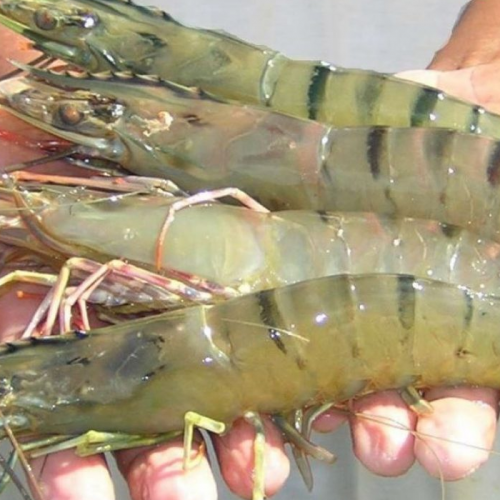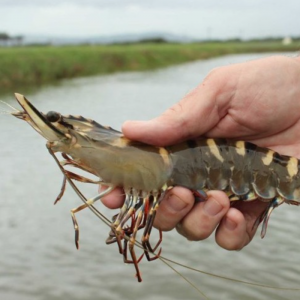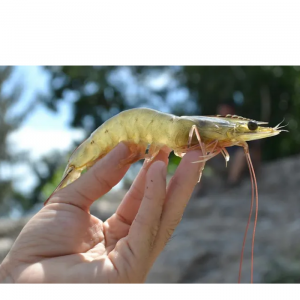
Risk and Reward: Rabobank’s Projections for The Shrimp Sector.
| Tue, 08 Oct 2019 - 13:26
Speaking at Alltech’s Aqua InDepth conference, which took place in Eindhoven this week, Nikolik presented an investor’s view of the long-term viability of the sector and how to stay ahead of the curve in a rapidly changing industry. During his presentation, Aqua in Debt, Nikolik explored the shrimp value chain and how shrimp producers can take advantages of emerging opportunities.
Technology can only take production so far
According to Rabobank's analysis, shrimp aquaculture is defined by two competing forces – disease and technology. Shrimp producers, usually based in developing countries, will gain a competitive advantage and grow by adopting a novel technology, only to have their advancement curtailed by diseases like early mortality syndrome (EMS) and white spot syndrome. According to Nikolik, technological innovations have spurred consistent growth for farm-raised shrimp despite the low price it fetches on the white spot syndrome. According to Nikolik, technological innovations have spurred consistent growth for farm-raised shrimp despite the low price it fetches on the market.
Nikolik is Rabobank's senior analyst for wildcatch and aquaculture
Though this cycle has allowed the sector to remain stable, problems remain. After a decline in production between 2013 and 2014 due to EMS, the supply of shrimp has recovered. The recovery has largely been attributed to shrimp farmers switching to smart farming or bioflocs. However, farmers who couldn’t afford the new tech have had a hard time staying in business. As a result, the increases in production and growth weren’t evenly spread – the current production model may not be stable.
In addition to this instability, shrimp is now approaching an oversupply on the global market. In Nikolik’s view, a price correction might be coming.
Shifting trade patterns
Shrimp aquaculture is experiencing massive trade flow shifts. Starting in the early 2010s, the primary trading route for the commodity was between Thailand and the United States. Flows moving within Asia represented a distant second. For Rabobank, shrimp imports were centred on the “Big 3” trading blocs: the US, Europe and Japan. In 2019, however, China has emerged as the largest importer and Japan is a distant fourth in terms of total imports.
Currently, the largest trade flow in farm-raised shrimp is from Ecuador to China, while US imports from Thailand have fallen, and India has emerged as a major player. By Rabobank’s metrics, 2019 is an underperforming year for shrimp; the price has remained stubbornly low, even though demand has increased. This difficulty is acutely felt by shrimp farmers. In Nikolik’s view, investors should think about hedging their bets if they operate in this market.
The changing trade patterns can be attributed to disease pressures and shrimp farmers adopting different business models to insulate themselves from market shocks. This is why, Nikolik explained, Ecuador has emerged as a major producer. When comparing Ecuador’s new success to Thailand’s recent decline, Nikolik noted that shrimp farmers in Asia have to overcome significant challenges to compete in global markets.
In Asia, companies like CP Foods are vertically integrated: they have a market presence in feed, genetics, juveniles and processing. However, the majority of Asian shrimp farmers are smallholders. This means that if any issues emerge on-farm, the onus is on the producer to resolve them and remain a viable business. Farmers are often the weakest part of the value chain.
Changing the business model
Looking to the future, Nikolik felt that the current business model for shrimp production is going to change. Since innovation plays such a strong role in the sector, he predicted that farmers are going to become more knowledgeable about the species they farm and will transition to new production systems like super-intensification and RAS to remain competitive. He also predicted that in order to better manage disease pressures, farmers will start to isolate the farm from the surrounding environment (similar to chicken production).
From the species perspective, Nikolik suggested that producers embrace genetic advancements for shrimp and that new strains will be able to thrive in the new production systems. Genetic advancement will also allow shrimp farmers to embrace extensive production.
Nikolik concluded his talk by reiterating that aquaculture can be a net benefit for the planet. Even though the sector can be risky, it can produce clean and nutritious food for the world and be profitable in the long-term.
Source : The Fish Site






















